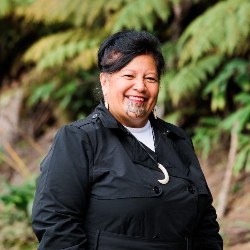DOC wants international recognition for Taieri Scroll Plain
6 August 2013
DOC wants to seek international recognition for Taieri Scroll Plain
The Department of Conservation (DOC) has identified the Taieri Scroll Plain, Nokomai patterned mire and Waihola-Waipori wetlands in its draft Otago Conservation Management Strategy (CMS) as areas worthy of international recognition.
The draft CMS is currently out for public comment. Ken Stewart, acting Otago Conservator, said “the natural and landscape values of these wetlands make them good candidates for recognition as Wetlands of International Importance under the Ramsar Convention, but it is something that we would want to discuss with landowners, Ngāi Tahu, Otago Regional Council, Fish and Game, and others in the community. We are floating these ideas in our draft CMS and would welcome feedback as part of the consultation process”.
The Taieri Scroll Plain, a large wetland in the Maniototo and Styx Basins that is part of the upper reaches of the Taieri River, is “the only one of its kind in New Zealand”, Mr Stewart said.
The Taieri River is the fourth longest river in New Zealand and follows an s-shaped course from the Central Otago block mountains to the sea near Dunedin. The upper catchment is a mosaic of tussock grasslands, farmland, wetlands and bogs which help store water and release it slowly into the river, protecting fish, wildlife and cultural values, and water sources. The river is well known for a number of rare native fish species and is an important trout fishery.
Less well known is that the Taieri River has several internationally and nationally recognised geological and landform features.
The Ramsar Convention recognises Wetlands of International Importance as being important for their economic, cultural, scientific and recreational value.
Mr Stewart said the department looked forward to hearing people’s thoughts about wetlands and discussing these ideas with the community.
You can view the draft Otago CMS on the DOC website at www.doc.govt.nz/cms. You can have your say by filling out a submission form on the webpage. Submissions are open until 13 September 2013.
Ramsar
Convention on Wetlands
See www.ramsar.org
The Convention on Wetlands of International Importance (Ramsar Convention - RC), is an intergovernmental treaty for the conservation and wise use of wetlands and their resources.
The RC mission is “the conservation and wise use of all wetlands through local and national actions and international cooperation, as a contribution towards achieving sustainable development throughout the world”. There are specific criteria to guide the selection and designation of Ramsar wetlands of international importance.
There currently six Ramsar sites in New Zealand: Whangamarino, Kopuatai Peat Dome, Firth of Thames, Manawatu River Mouth and Estuary, Farewell Spit and Awarua Wetlands.
Nokomai patterned mire
This is
part of a relatively unmodified wetland complex that
occupies several square kilometres on the uplands of the
southern Garvie Mountains in the south-central South
Island.
Mires are wetlands dominated by grasses, mosses and peat-forming plants. They have distinctive patterns of open pools and clumps of low-stature vegetation.
Waipori-Waihola Wetland
Lakes
Waihola and Waipori and their associated wetlands are the
most significant waterfowl habitat in Otago. The lakes are
shallow and drain through an extensive swamp into the
Waipori River then the Taieri River. The swampland includes
vegetated islands, lagoons, shallow pools, meandering
channels and backswamps.
The 2000 ha wetland complex hosts more than 10,000 waterfowl, has regionally significant whitebait, eel and sports fisheries, and is habitat for many threatened and endangered species of plants, fish and birds. The Sinclair Wetlands between the two lakes is protected under a QE II covenant.
There are concerns about the declining water quality, particularly from sewage, stormwater and farm discharges.
The Lake Waihola Waipori Wetlands Society is helping to restore wetland values.
Conservation Management Strategies
A CMS
is a statutory document that provides strategic direction
for DOC’s management of public conservation land
integrating legislation, policy, strategic goals over a
ten-year period. It aims, through conversations with
communities, to show how natural, historic and cultural
heritage of regional and local importance fit into the
national context.
A CMS also:
• identifies how to
integrate management of places to achieve national
conservation outcomes;
• clarifies priorities for
management of conservation resources;
• guides decision
making (e.g. on applications to undertake commercial
activities);
• describes conservation outcomes to be
achieved;
• sets out a framework to increase
conservation efforts over the next decade recognising that
the department cannot do it alone.
The draft Otago CMS has been prepared by DOC in consultation with the Otago Conservation Board, Ngai Tahu and the community.
Draft CMSs have also been released for Canterbury and Southland.
ENDS


 Gordon Campbell: On bird flu, AUKUS entry fees and Cindy Lee
Gordon Campbell: On bird flu, AUKUS entry fees and Cindy Lee Environmental Defence Society: Fast-track Approvals Bill Presents A Serious Risk To New Zealand Exporters
Environmental Defence Society: Fast-track Approvals Bill Presents A Serious Risk To New Zealand Exporters NZ Government: New Lab To Help Protect Key Pacific Tuna Fisheries
NZ Government: New Lab To Help Protect Key Pacific Tuna Fisheries Susan Botting - Local Democracy Reporter: Ruawai Leader Slams Kaipara Council In Battle Over $400k Property
Susan Botting - Local Democracy Reporter: Ruawai Leader Slams Kaipara Council In Battle Over $400k Property Te Pati Maori: Another ‘Stolen Generation’ Enabled By Court Ruling On Waitangi Tribunal Summons
Te Pati Maori: Another ‘Stolen Generation’ Enabled By Court Ruling On Waitangi Tribunal Summons Peace Action Wellington: Die In for Palestine Marks ANZAC day
Peace Action Wellington: Die In for Palestine Marks ANZAC day Labour Party: Penny Drops – But What About Seymour And Peters?
Labour Party: Penny Drops – But What About Seymour And Peters?


